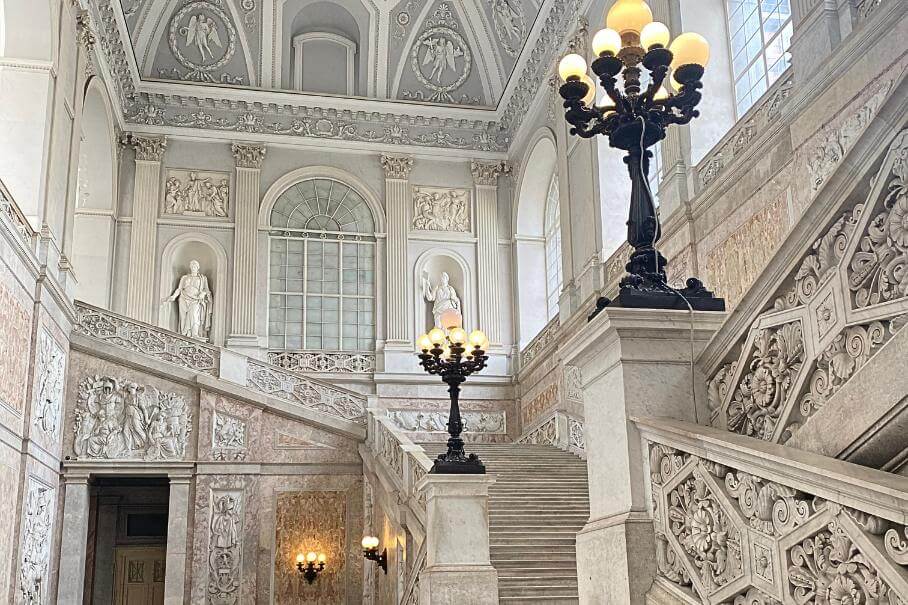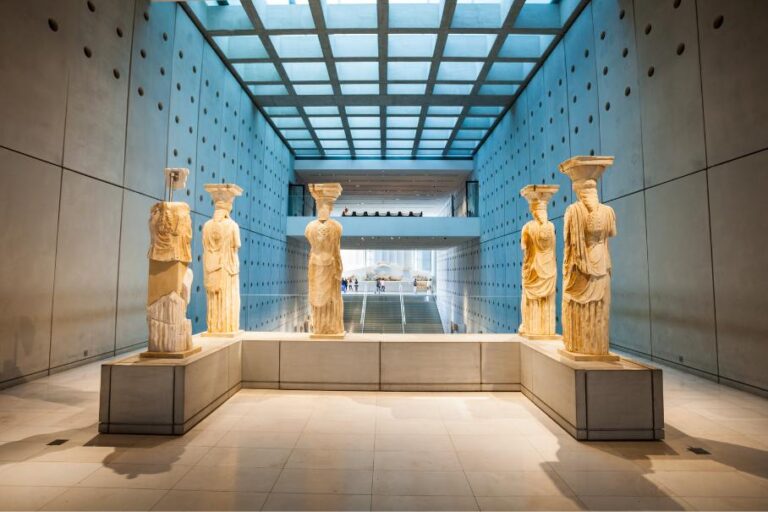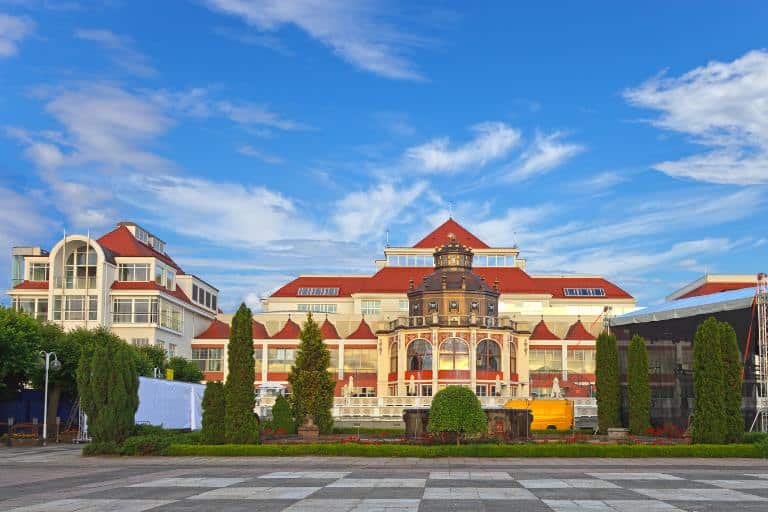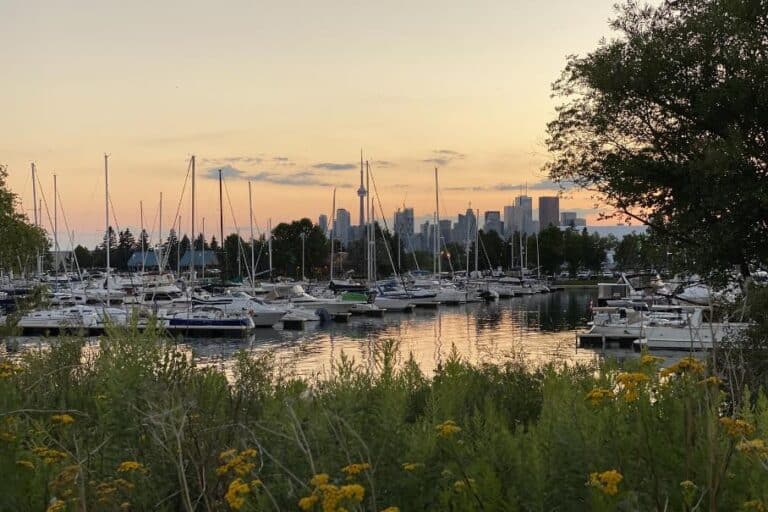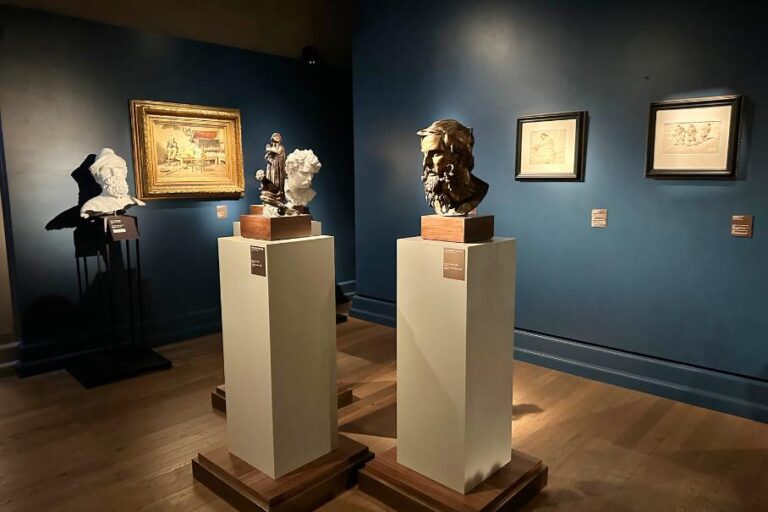Best Museums in Naples, Italy for Art and History Lovers
While most people think of Naples as the home of pizza, the city also has pretty impressive museums worth adding to your itinerary. From ancient artifacts to Baroque masterpieces and bold contemporary collections, the museums in Naples offer something for everyone.
It’s a city with thousands of years of history, so it’s not hard to find something to explore. Naples was also the seat of the Bourbon kings that ruled Southern Italy, and you can explore its royal past through the many museums. I’ve compiled a list of some of the best places to visit to help you plan your trip and immerse yourself in the essence of Naples.
Museums in Naples to check out
I’m in Naples often and try to visit something new each time I visit. If you don’t have a lot of time and still want to see some museums in Naples, I recommend adding something from this list to your itinerary.
| Museum Name | Type | Hours | Prices |
|---|---|---|---|
| National Archaeological Museum of Naples | Archaeology, Ancient Art | Wed–Mon: 9 a.m. to 7:30 p.m., Closed Tue | €15 full, discounts available |
| Capodimonte Museum | Art Museum, Royal Palace | Thu–Tue: 8:30 a.m. to 7:30 p.m., Closed Wed | €12 full, discounts available |
| Certosa di San Martino | Religious Art, History | Wed–Mon: 8:30 a.m. to 7:30 p.m., Closed Tue | €6 full, discounts available |
| Sansevero Chapel Museum | Baroque Art, Sculpture | Wed–Mon: 9 a.m. to 7 p.m., Closed Tue | €10 full, booking recommended |
| Palazzo Reale | Royal Palace, History, Art | Thu–Tue: 9 a.m. to 8 p.m., Closed Wed | €6 full, discounts available |
| MADRE | Contemporary Art | Mon–Sat: 10 a.m. to 7:30 p.m., Closed Tue | €8 full, discounts available |
| Gallerie d’Italia – Palazzo Zevallos Stigliano | Art Museum, Historic Building | Tue–Fri: 10 a.m. to 7 p.m., Sat–Sun: 10 a.m. to 8 p.m., Closed Mon | €6 full, free on 1st Sunday |
| Museo Civico Gaetano Filangieri | Art, Decorative Arts, Armoury | Tue–Sat: 10 a.m. to 4 p.m., Closed Sun–Mon | €5 full, discounts available |
| Pio Monte della Misericordia | Religious Art, Historic Site | Mon–Sat: 10 a.m. to 6 p.m., Sun: 9 a.m. to 2:30 p.m. | €8 full, discounts available |
| Paleontological Museum | Natural History, Paleontology | Mon–Fri: 9 a.m. to 2 p.m., Closed Sat–Sun | €5 full, discounts available |
National Archaeological Museum of Naples (Museo Archeologico Nazionale di Napoli)
One of Italy’s most important institutions, this national museum is a paradise for history buffs. Housed in an original building that was redesigned near the end of the 1930s, it’s one of the oldest archeological museums in Europe. You’ll find treasures from the excavations of Pompeii, including mosaics, sculptures, and everyday items that reveal daily life in the Roman world.

The museum also features the impressive Farnese Collection, the Villa dei Papiri scrolls, and the Egyptian Collection. You can also check out the fascinating Secret Cabinet (“Gabinetto Segreto”), which showcases ancient erotic art in a secret room. Set in Piazza Museo, it delivers a unique experience at the heart of the city’s cultural core.
Capodimonte Museum (Museo e Real Bosco di Capodimonte)
Sitting on a hill overlooking Naples, the Capodimonte Museum occupies a grand palace built as a hunting lodge for the Bourbon King Charles VII in 1738. The museum houses one of Italy’s richest art collections, which Charles inherited from his mother. It includes masterpieces by Caravaggio, Raphael, Titian and Botticelli. The Royal Apartments house ornate furniture, porcelain, and tapestries that give you an insight into the opulent lifestyle of Naples’ former rulers.
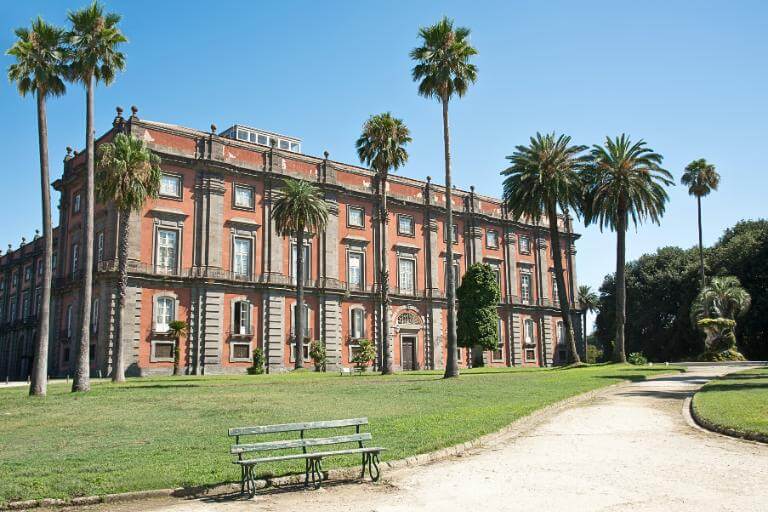
Surrounding the museum, the Real Bosco di Capodimonte Park offers peaceful gardens and woodland paths. The museum’s second floor contains an impressive collection of 19th-century art and contemporary works. With a blend of Renaissance masterpieces, Neapolitan paintings, and royal history, Capodimonte is where you can learn about the southern Italian artistic heritage.
Certosa di San Martino (Charterhouse of San Martino)
This former Carthusian monastery sits high on Vomero Hill, offering spectacular views of the Bay of Naples. Built in the 14th century and extensively remodelled during the 17th century, the complex represents the height of Neapolitan Baroque architecture. The church features intricate marble work, frescoes by Massimo Stanzione, and a beautiful chapel with stunning ceiling art.

The monastery now houses a museum dedicated to Neapolitan history and art. Its collection includes historic boats, royal carriages, and the famous Cuciniello presepe—an elaborate 18th-century nativity scene. The charterhouse’s peaceful courtyards and cloisters provide a quiet retreat from the busy city below. If you’re into religious art, then this is a must-stop.
Sansevero Chapel Museum (Museo Cappella Sansevero)
Hidden in the heart of Naples’ historic centre is a small chapel that contains what many consider Italy’s most remarkable sculpture—the Veiled Christ (Cristo Velato). Created by Giuseppe Sanmartino in 1753, this marble masterpiece depicts Christ covered by a seemingly transparent veil, showcasing technical skill that continues to amaze visitors. The chapel was commissioned by Raimondo di Sangro, a scientist and nobleman known for his mysterious experiments.
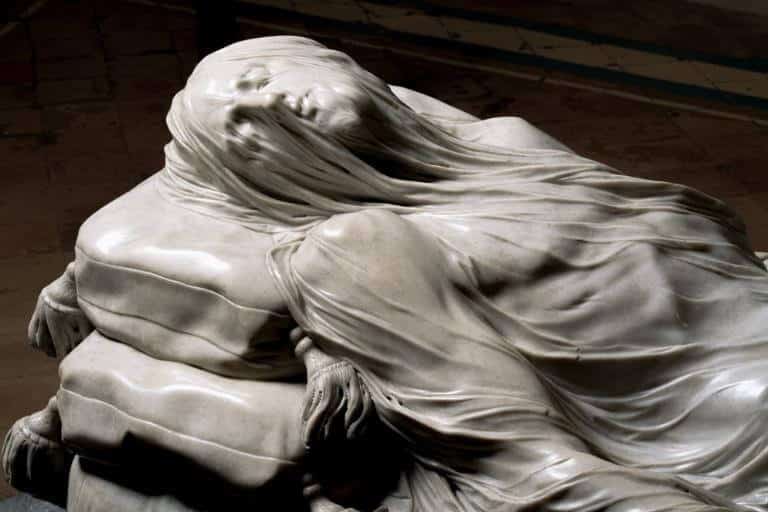
Beyond the Veiled Christ, the chapel museum houses other extraordinary sculptures, including anatomical models with intricate artificial circulatory systems. The ceiling fresco, floor design, and symbolic elements reflect di Sangro’s interest in alchemy and esoteric knowledge. Despite its small size, the chapel delivers an intense artistic experience that will stay with you long after you leave.
Palazzo Reale (Royal Palace of Naples)
This grand palace on Piazza del Plebiscito was built during Spanish rule in the early 17th century. It later served as the Bourbon royal residence. The palace complex includes the National Library with rare manuscripts, the lavish Court Theater and a spectacular staircase.
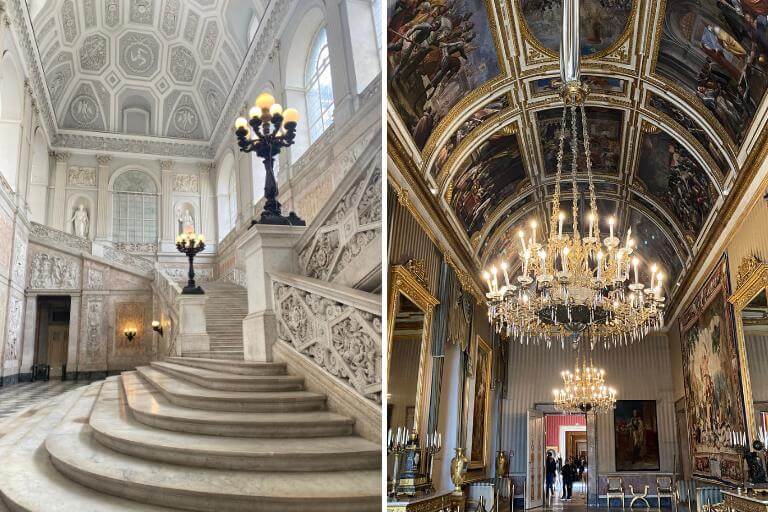
While the royal apartments inside have ornate furnishings, Flemish tapestries and stunning ceiling frescoes, the façade features niches with statues of Naples’ historic rulers. As the palace witnessed key moments in Italian history (including the transition from Bourbon rule to Italian unification), it’s both an artistic and historical treasure.
MADRE – Museo d’Arte Contemporanea Donnaregina
Museo Madre, or Donnaregina Contemporary Art Museum, is housed in the restored Palazzo Donnaregina, MADRE brings contemporary art to the historic center of Naples. The building’s transformation was led by architect Alvaro Siza, who skillfully blended the palazzo’s historic features with modern exhibition spaces.
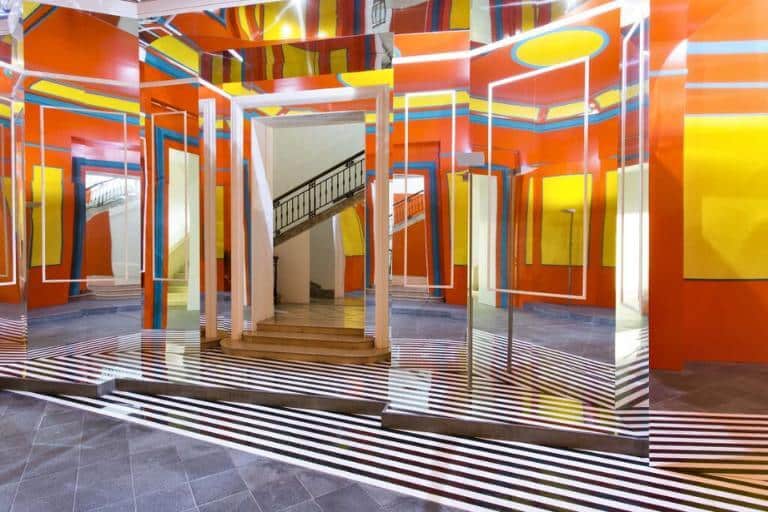
The museum features permanent installations by international artists, including Jeff Koons, Anish Kapoor and Richard Serra. MADRE serves as a creative hub, offering workshops, performances, and cultural activities that engage the local community.
Gallerie d’Italia – Palazzo Zevallos Stigliano
Located on the busy shopping street of Via Toledo, this elegant palace once housed the headquarters of Banco di Napoli. Now transformed into an art museum, its richly decorated rooms showcase important works from the 17th through 20th centuries. The highlight is Caravaggio’s final masterpiece, “The Martyrdom of Saint Ursula,” painted shortly before he died in 1610.
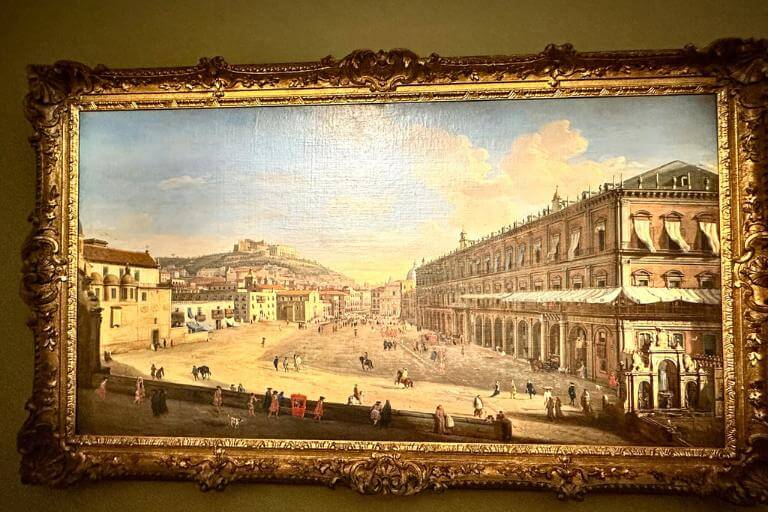
The museum’s collection traces the evolution of Neapolitan art across four centuries. The palazzo itself, with its ornate architectural features and grand staircase, represents an important example of Naples’ aristocratic building tradition and offers insight into the city’s banking history.
Museo Civico Gaetano Filangieri
Housed in a stunning 15th-century Palazzo Como on Via Duomo in the heart of Naples, the museum was founded by Count Gaetano Filangieri in the late 19th century. The collection features weapons, porcelain, paintings, and decorative arts from the Middle Ages through the 19th century. The museum’s ornate entrance hall and original building architecture make it worth visiting for the setting alone.

After damage during World War II, the museum reopened in 2012 with its collection carefully restored. The intimate setting offers a more personal museum experience than Naples’ larger institutions. With its mix of Renaissance armour, Neapolitan paintings, and historical artifacts, this hidden gem captures the essence of Naples’ artistic heritage without the crowds of better-known museums.
Pio Monte della Misericordia
This unique institution combines a working charity founded in 1602 with an art museum centered around one of Caravaggio’s most famous paintings, “The Seven Works of Mercy.” The Baroque church housing the collection sits near the Dei Tribunali area in Naples’ historic center. The Caravaggio masterpiece remains in its original setting, exactly where it was commissioned to hang over 400 years ago.
Beyond the celebrated Caravaggio, the museum contains baroque masterpieces by renowned artists like Battistello Caracciolo and Luca Giordano. The upper floors display the institution’s historical archives and additional art collections in beautiful rooms. This museum offers a chance to see great art while experiencing a charitable institution that has served Naples continuously since the early 17th century.
Paleontological Museum
Housed in part of Naples’ old university complex dating to the 16th century, this natural history museum contains one of Italy’s most important fossil collections. You can find specimens from dinosaur remains to ancient elephant species that once roamed southern Italy. The highlight is a complete skeleton of a small dinosaur discovered near Naples.
The Paleontologial Museum underwent renovation in the early 2000s, with exhibits redesigned to appeal to both scientists and families. Interactive displays explain how the Mediterranean region evolved through geological periods. Though often overlooked by tourists focused on art museums, this scientific collection provides a fascinating break from paintings and sculptures.
Tips for visiting museums in Naples
Most Naples museums charge entry fees ranging from €5-15, but many offer free admission on the first Sunday of each month. Buy tickets online to avoid long lines, especially at popular spots like the Archaeological Museum and Capodimonte.
PRO TIP: Get the ArteCard tourist pass if you plan to visit several museums. It includes free entrance and public transport. If you plan on visiting other sites like Pompeii or the Palace of Caserta, consider the Campania ArteCard, which offers free entrance. Select your card here.
Naples museums typically open from 9 a.m. to 7 p.m. Many close on Mondays and might also be closed briefly during the day. Double-check opening hours before visiting as they often change seasonally. Summer brings crowds, so visit in the early morning or late afternoon.
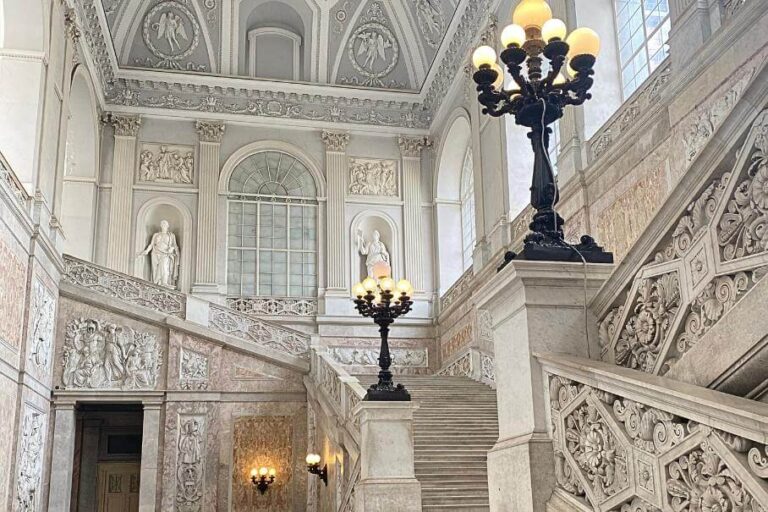
Consider museum locations when planning your day. The Archaeological Museum sits near the historic center, while Capodimonte requires uphill travel to the city’s northern edge. The Chapel of Sansevero and Pio Monte della Misericordia are within walking distance of each other in the historic center. Naples is very hilly in some areas so you might be better off using public transit between distant sites.
Naples gets very hot in summer, so the air-conditioned museums provide welcome relief from the heat. Bring water and wear comfortable shoes as many museums occupy historic buildings with stairs and uneven floors. Photography policies vary by museum and some allow non-flash photos while others prohibit any pictures, especially of special exhibits or delicate items like the Veiled Christ.
Final thoughts on museums in Naples
I am fortunate to live about an hour from Naples, so I got to know the city quite well. While most people pass through Naples on their way to the Amalfi Coast or stop by for a quick pizza, the city has lots to offer. The museums in Naples, in particular, offer an opportunity to learn more about this underrated city.
Naples has a lot of history to explore, from the Greeks who founded it and the Romans who grew it to the Bourbon kings who ruled it. It’s a great destination not just for foodies, but also those who love history, architecture and art. So, if you’re planning a trip to Naples, add some of these museums to your itinerary. You’ll be glad you did.

